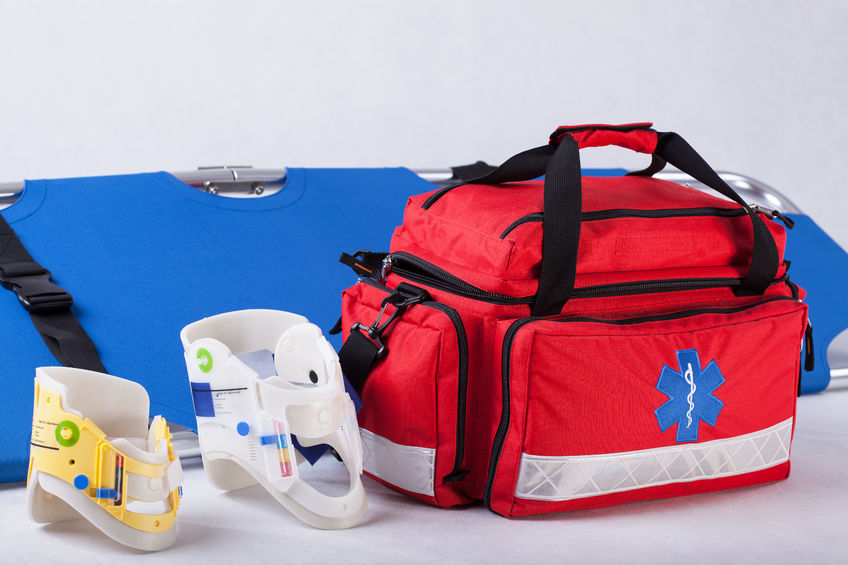Building a primary First Aid/Trauma kit

When people think First Aid what usually comes to mind is Band Aids and Antibiotic ointment in the bathroom or a small first aid kit. First Aids kits , for the most part, are sufficient. Taking it to the next level there are Trauma kits. These are used by First Responders like EMTs. They contain items in First Aid kits but much more. Think of them as a portable doctor's office. Both kits come in all shapes and sizes. First Aid kits range from a few to a hundred dollars. Trauma kits can cost several hundred dollars. You can get premade kits, the items themselves or the empty bags. In this article I'm going to go right to what I recommend as a primary kit that has everything needed for a serious injuries shy of having to go to the hospital. You have two options here. Option #1 is spending time learning about all the items to have in these kits and find places that sell them then build your kits. Option #2 is buying a premade Trauma kit Emergency Responders use, learn about all the items and then add missing items. Me personally, I do a combination of both.
First Aid Supplies
- First Aid Instructions (Pamphlet or book)
- Adhesive and Butterfly bandages
- Antiboitic Ointment
- Hydrogen Peroxide
- Antiseptic wipes
- N95/100 mask (N95 are the most common. N100 are harder to come by)
- Thermometer
- Emergency Blanket
- Cotton Balls/Swabs
- Nitrile Gloves
- Medical Tape
- Petroleum Jelly
- Cold Compress
- Compress Dressing
- Gauze Pads (Minor Bleeding)
- Rolled Gauze
- Elastic Roller Bandage
- Triangular Bandage
- Medical Scissors
- Tweezers
- Moleskin (Used for blisters)
- Pain relief medicine
- Anti Itch medicine
- Antacid
- Anti Diarrhea medicine
- Antihistamine
- Sunscreen
- Insect Repellent
Trauma Supplies
- Alcohol Prep pads
- 91% Isopropyl Alcohol
- Burn Dressing
- Bulky Gauze Bandage
- Combine Pad (Heavy Bleeding)
- Blood Clotting Agent (Highly Recommended)
- Trauma Dressing
- Ammonia Inhalants
- Blood Pressure Cup
- Stethoscope
- Safety Goggles
- CPR Shield
- Eye Pad
- Eye Wash
- Tourniquet
- Splint (Arm, Leg and Finger)
- C-Collar (Neck Brace)
- Oral Airways
- Dental Filling kit
- Irrigation syringe
- Antibiotics
- Injectable epinephrine
- Instant Glucose (Treat hypoglycemia)
Storage
Now that you have all the items, where do you store them? You can have all these items in a plastic storage bin or a large First Aid/Trauma bag. Both are portable but the bag will be more flexible. The point of this is mainly for the bulk of your supplies. For example; I have duplicates of the basic first aid items in smaller kits all over the place. The primary kit has a large quantity of all the basic items as well as the items needed for severe injuries; hopefully you will not need to use. You may have noticed I didn't mention anything about expiration. That subject is highly debatable in so many fields. For the most part I found that expiration dates mean quality degradation. I personally don't dwell on this subject. I do wind up discarding items that are obviously unusable. I also periodically use up items I have stored for a long period of time.
Training
Make sure you learn about all the different first aid items and uses. Also make sure you get proper training in first aid. I learned some from college and the military but I plan on continuing my training. I will be looking at what the Red Cross has to offer. I also plan on getting CPR certified.
Final thought
First Aid is a large piece of Emergency Preparedness. I focus much of my preparedness time on the subject. The main thing to focus on is properly identifying first aid situations and having the means to address them.